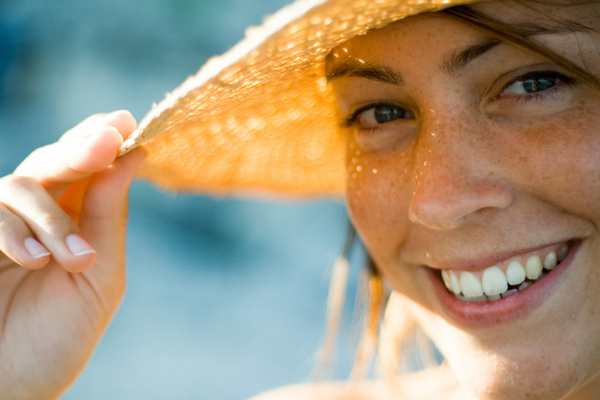Enjoy Summer and Protect Your Skin

Summer is here! The days are long, and the sun is bright. As we venture into the sunny outdoors, it’s important to remember that too much sun can be harmful to our skin.
Did you know that Oregon has one of the highest rates of melanoma in the country? And that the melanoma death rate for women in Oregon is the highest in the country, according to the CDC? This may be related in part to the high proportion of Oregonians with fair skin (a known risk factor for melanoma, one of the deadliest forms of skin cancer), and the intense, episodic UV exposure we sustain during our fleeting, but intense, sunny summer months.
The sun can feel so good after a dark winter, why is it harmful? Ultraviolet radiation from sunlight damages the skin's DNA, which is the first step to skin cancer development. UVA rays penetrate deeply and damage collagen and skin cells, and are responsible for premature aging of the skin. UVA can pass though glass (office and vehicles).
UVB rays have more effect on the outer skin layers. They cause the skin to burn and appear tan, and are more intense during summer months. In total, sunlight causes photoaging of the skin, including brown spots, laxity and wrinkling. Photoaging damage worsens as more sun exposure occurs. And then, natural aging processes kick in, decreasing the skin's ability to repair itself.
The good news is that research suggests negative outcomes – including skin cancers – can be prevented by protecting your skin from UV radiation. Dermatologists at OHSU recommend the following tips to help protect you from the harmful effects of the sun:
- Check the expiration date on your sunscreen tube. If it is expired, it will not protect your skin, so toss it and get a new one. There are multiple choices. Find one that is compatible with your skin.
- Cover all sun-exposed surfaces, including tops of ears, scalp (where hair is thinning or absent), back of neck, and entire face (especially nose). If arms, legs, hands and feet are exposed, apply sunscreen to those surfaces as well.
- Find a sunscreen that is “broad-spectrum,” gives both UVA and UVB protection, and has an SPF of at least 30.
- Sunscreen should be reapplied every 2 hours if you’re in direct sunlight (especially between the hours of 10AM and 2PM). If you’re participating in summertime water activities, use sunscreens that state they are water-resistant (no sunscreen is water proof) and reapply every 80-90 minutes to ensure continued protection. Use sunscreens even on cloudy days, especially in the summer months.
- Use lip balms that contain SPF 30 or higher and reapply often. Lips can get sunburned and develop cancers just like the skin.
- Select moisturizing creams or lotions that have an SPF of 30 or higher as part of your daily skin care routine.
- Wear wrap-around sunglasses – they block 99 percent of UVA and UVB rays.
- Wear a hat with a 3 to 4" brim or front and neck flaps. (Baseball hats do not protect ears or neck).
- Shield yourself from UV radiation by wearing tightly woven clothing that covers all exposed skin. Typical summer fabrics have an SPF of 6.5; less if wet. There are many UV protective clothing choices and swimwear available for both adults and children.
And while we all need Vitamin D, it is far safer to get it by eating the right foods and the right supplements than by being in the sun too long.
We wish you a happy, healthy summer.